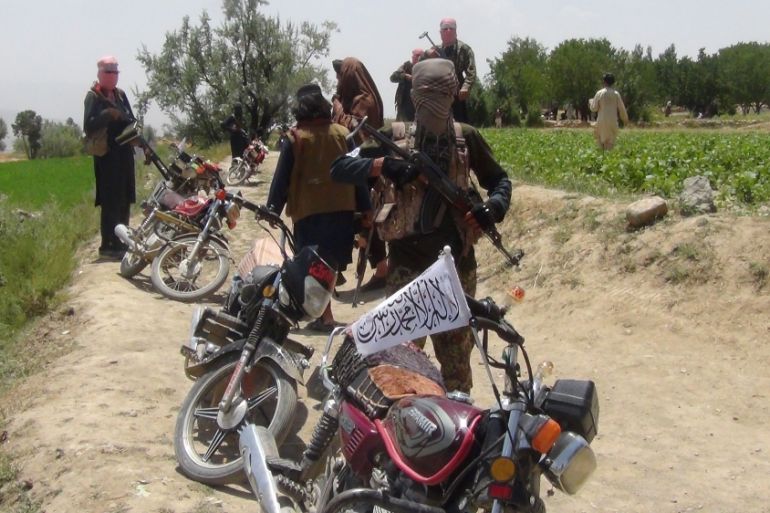Taliban threatens media in Afghanistan ‘over enemy collusion’
Group says media organisations have one week to halt what they call anti-Taliban statements or be targeted by fighters.

The Taliban has said that Afghan media organisations should stop spreading what they call “anti-jihad and Taliban sentiments” or be targeted as enemies.
The armed group issued a statement that gave “television, radio and other publishing media” one week to stop what they describe as anti-Taliban propaganda or be viewed as legitimate targets for attack.
Keep reading
list of 4 itemsPhotos: Tourist numbers up in post-war Afghanistan
Taliban ban on girls’ education defies both worldly and religious logic
Afghanistan calls for ‘respect’ after Cricket Australia snub
“In such a case, the journalist or employees of these so-called media organisations will not be safe,” the statement said.
The Afghan government has regularly paid several media outlets to air advertisements asking Afghans to contact authorities with any information regarding attacks or who carried them out.
The Taliban called it an attempt by intelligence forces to use the media to “distort the population’s view of the Taliban”.
“Inciting the people against Jihad, special phone numbers of the intelligence and security forces are announced for people to reach out and collude with the enemy,” the group said in a statement.
“This is an attempt by the intelligence forces to use these media organisations to distort the population’s view of the Taliban and directly coopt the media for its purposes,” the statement continued.
“If in a period of one week all the local FM (radio stations), televisions and other media organisations do not stop such acts, the Mujahedeen of the Islamic Emirate will view them not as media organisations but as the nests of the enemy’s intelligence apparatus, thus they will be targeted, in all provinces, by our forces.
“In such case, the journalist or employees of these so called media organisations will not be safe,” the Taliban said.
Attacks on media
The group has threatened and attacked journalists before.
In January 2016, a Taliban suicide bomber rammed his car into a bus carrying employees of Tolo TV, the country’s most popular private broadcaster, killing seven journalists.
The Taliban had said it bombed the bus because it claimed Tolo was producing propaganda for the US military and its allies.
Tolo was attacked for “promoting obscenity, irreligiousness, foreign culture and nudity”, the group said in a statement at the time.
Journalists in Afghanistan have been threatened or attacked not only by the Taliban, but also by fighters from the Islamic State of Iraq and the Levant (ISIL or ISIS), government officials and powerful local figures unhappy with news coverage.
Afghanistan was labelled the deadliest place to be a journalist in 2018 by both the Committee to Protect Journalists which cited 13 killings that year and the International Federation of Journalists that counted 16 scribe deaths.
The Taliban has been fighting Afghan security forces, aided by NATO and US troops, even as their representatives in Qatar have been negotiating a peace agreement with the United States’ envoy Zalmay Khalilzad.
They have also held talks with European negotiators.
The next round of talks, the seventh one, is scheduled to begin on June 29 in Doha.
Khalilzad has said the Taliban has agreed to a framework for an agreement that is made up of four interconnected parts: counterterrorism assurances, troop withdrawal, intra-Afghan negotiations that lead to a political settlement and a comprehensive and permanent ceasefire.